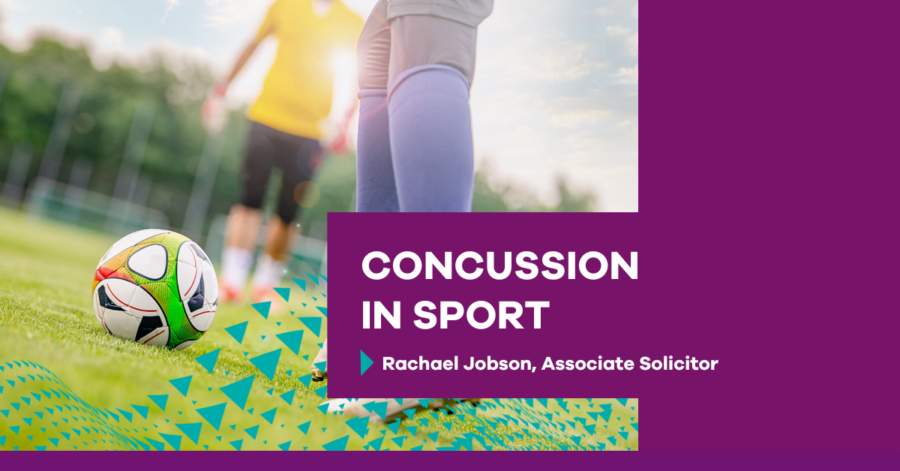
Rachael Jobson, associate at Minster Law, discusses the current approach to spotting concussion in sport and the action plan taken to reduce risks.
I previously wrote a piece for the Neuro Rehabilitation Times in June 2021, which centred around my feelings as a parent whose son plays rugby alongside my role as a specialist brain injury solicitor, and the concern surrounding concussion in sport. At that time, things were beginning to change, the Premier League had become the first football league to adopt concussion substitutions. Headway’s ‘If In Doubt, Sit It Out’ campaign was reinforcing the message that safety around concussion is paramount, and that players should be supported and encouraged to remove themselves from the game if they have any concerns about their ability to continue. As a secretary of Headway Northumberland, I am proud of that campaign run at regional and national level, that has focussed a spotlight on head injuries and their impact.
Since that article, the Government has published an action plan to tackle concussion in sport to help to reduce the risks. The protocols were to be developed alongside medical experts and sport’s governing bodies. A concussion research forum was to be formed to address gaps in knowledge and a plan to engage with technology companies to develop a way to monitor the long-term impact and to mitigate the effect and occurrences of concussion.
The action plan intends to create a single set of shared protocols, to include how to recognise signs of a head injury on and off the field, rules surrounding removing a player from the field and immediate actions to be taken in the event of a head injury. The concussion charity Love of the Game is tasked with identifying technology that could mitigate concussion in sport with the hope these improvements could be introduced by Autumn 2022.
Links with the NHS will be strengthened so that concussion through sport will be treated effectively through NHS pathways to improve the safety of players in all sports at all levels.
One year on from my article, and I have seen the results of concussion in sport being brought to the fore for myself. My son plays rugby for a local team and for Northumberland County, and on many occasions both at local and county level, the World Rugby concussion guidance has been implemented. Any suggestion of a knock to the head, the player has been removed from the field, assessed, and then if a head injury is suspected is removed from playing and training for a minimum of two weeks. This year my son moves up to the next age group, Under 18s, he is 16, there are much larger and older players in the teams he faces, and the contact correspondingly can be harder (if they can catch him)! It is always a concern when he takes to the pitch, but I feel reassured that concussion is taken seriously, the players are supported to remove themselves from the game and the necessary precautions are taken following any suspected concussion.
This is an ongoing process and further and better protections are still needed, not every official in every game gets it right but we are certainly in a better place than we were. The ongoing research projects in rugby and football into the long-term consequences, should more protection not be given, alongside the commitment to new protocols around concussion in sport, will I believe, help to bring about and sustain significant change.



